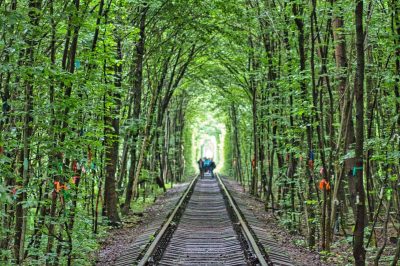The train slowly enters the station of Chernivtsi. In about three and a half hours, we have traveled southeast from Lviv to the heart of Bukovina. On the platform, as everywhere in Ukraine, cab drivers offer us their services. Some babushkas also try to get rid of last minute “Komnati” to foreigners. It is already shortly before 11 p.m. on the evening before a holiday. But already when booking our accommodation it becomes clear: It is more difficult to find a room here than in Lviv. The prices are twice as high. The next day we realize why. The Bukovina metropolis has a rich history and there are many things to do in Chernivtsi.
Visit Chernivtsi University – Former seat of the Metropolitan of Bukovina
If it were not clearly written on the entrance portal “Університет”, hardly anyone would suspect that this is the University of Chernivtsi. And, in fact, it used to house the Metropolitan of Bukovina and Dalmatia. So everything looks a little more religious – not just the massive church.
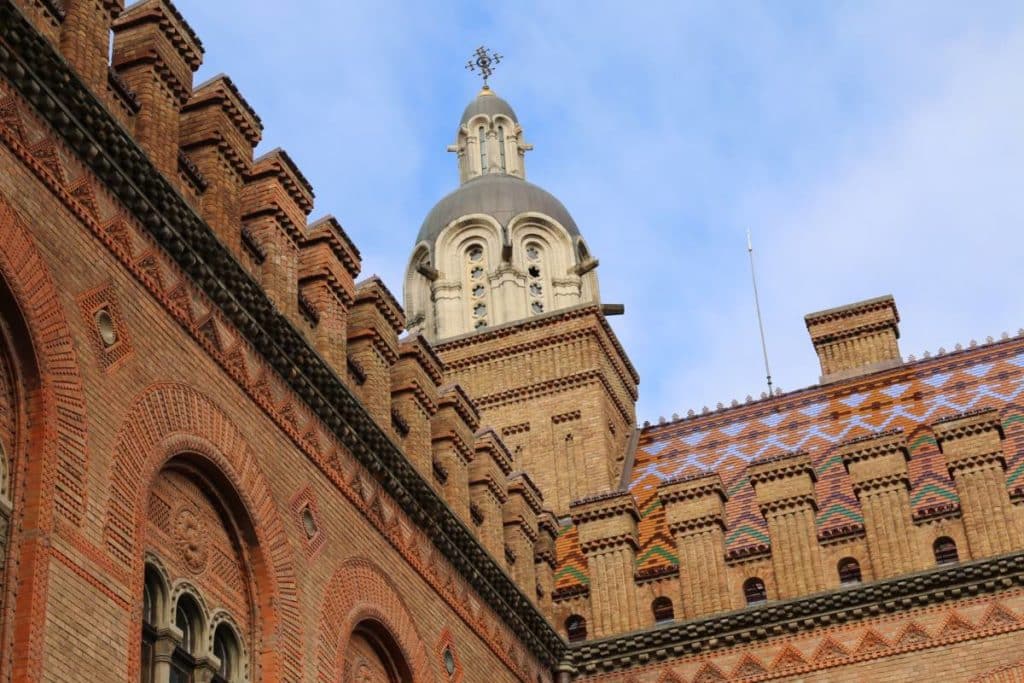

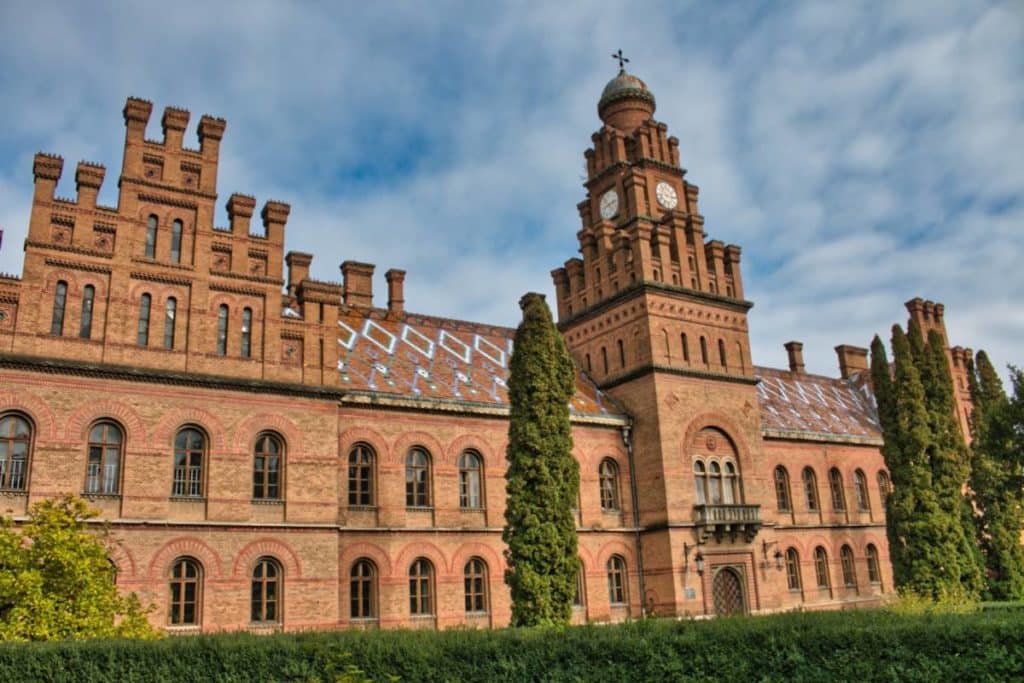
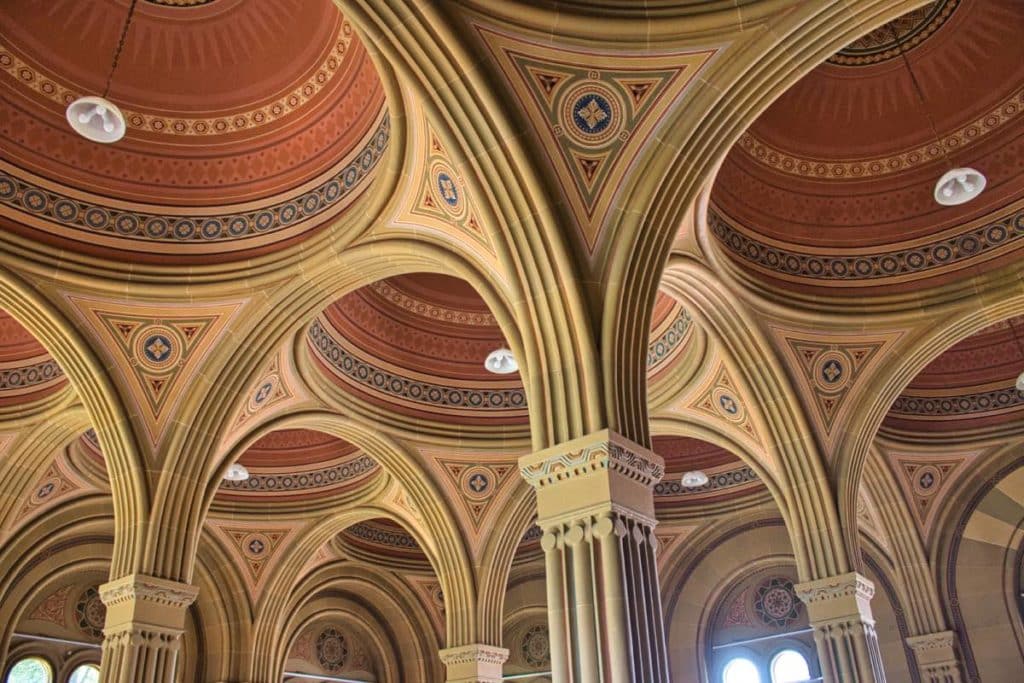

Just across from the church, a clock tower that looks like a similar to the one of the Kremlin in Moscow shows the time. In between are the brick buildings of the main building and the side wings, all richly decorated and very colorful. Who wouldn’t want to study in such a building?
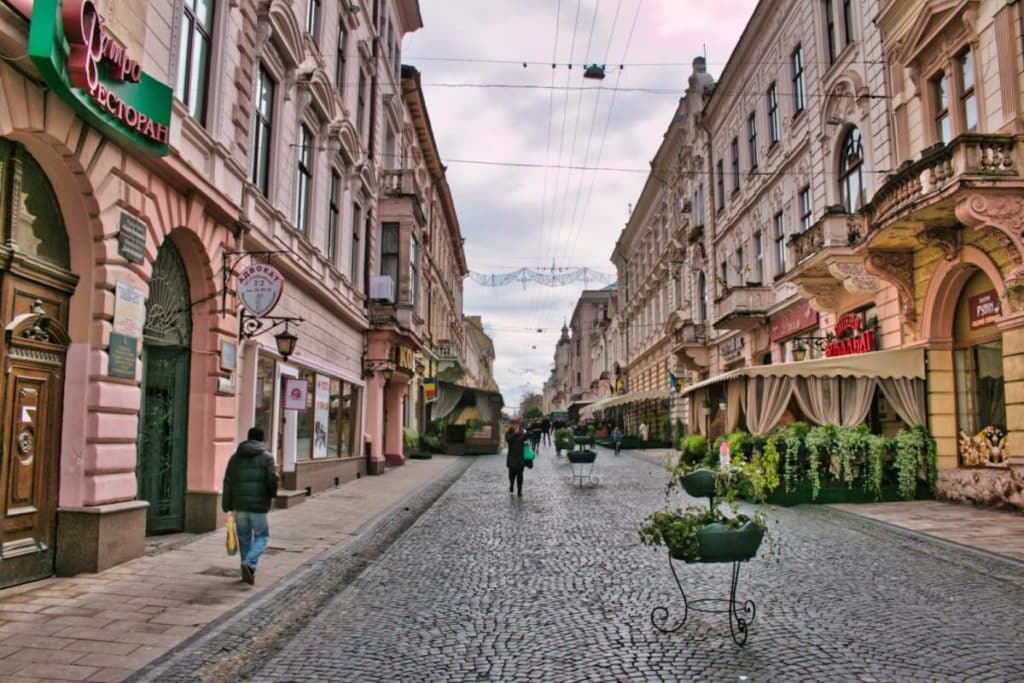
Stroll along Olha Kobyljanska Street
Chernivtsi today belongs to Ukraine and Ruthenians, the former name for Ukrainians, have always lived in the area. And so it happens that Olha Kobylyanska was born here and spent her life in Chernivtsi. No wonder, then, that in Chernivtsi, Ukraine, the number 1 boulevard was named after this greatest Ukrainian poetess of the region. And the street also has a lot to offer as Chernivtsi’s main street. You can find the Paul Celan Literary Center, all major stores, as well as restaurants and other Chernivtsi attractions here. Benches invite you to linger, the beautiful facades to stroll along.
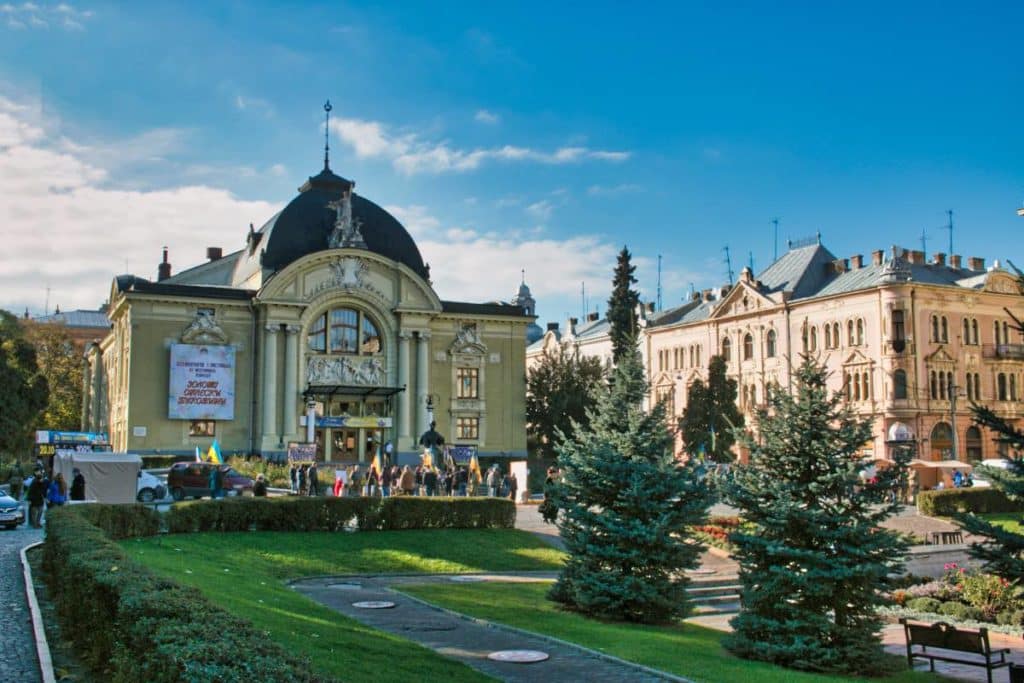
Admire the Theater Square with its Austrian architecture
The Theater Square, if you look closely, is a real tour through the history of Chernivtsi. Here the history of the city is wrapped in the microcosm of a square. Thus, on Theater Square stands not only the Jewish House, which today houses the Museum of the History and Culture of Jews in Bukovina. The German House also shares the square. By the way, the theater that gives the square its name is identical in construction to the municipal theater of Fürth and was built by the same company – Fellner and Helmer.
And the modernist building next to the Jewish House, which was built during the Soviet Union and also embodies the claim to power of the communist ideology, brutely pushes itself into the picture. And to our surprise, during our visit for the Day of Heroes, the Ukrainian army was also represented and commemorated the soldiers who died in eastern Ukraine and solicited volunteers.

Look at the Church of St. Nicholas drunk and sober
It is probably one of my favorite Chernivtsi sights we discovered only by chance on the way to our hotel: The church of St. Nicholas is also called “the drunken church” by the locals. The four towers around the dome are twisted, which looks quite strange and unusual for a church. Whether the priests are also drunk from all the wine, we could not determine. On our way back from the bar, however, the church looked straighter than before. Strange, isn’t it?
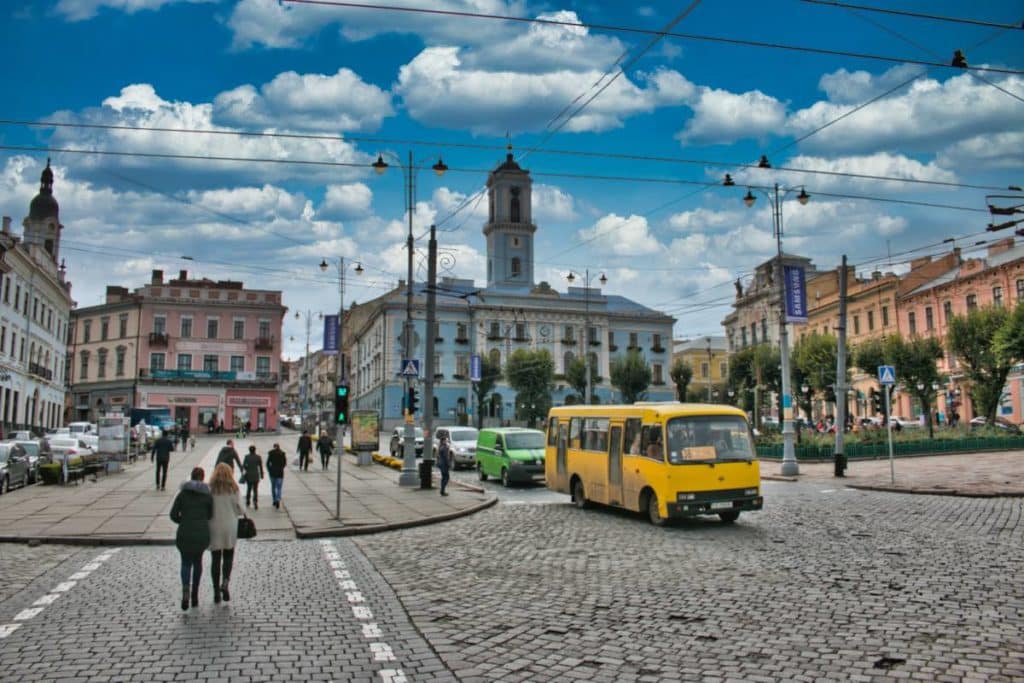
Listen to the trumpets from the Town Hall at Central Square
Always on time at noon a trumpeter blows from the Chernivtsi Town Hall. The sound of the brass instrument then resounds over the whole Central Square with the busy traffic of cars, autobuses and trolley buses. Joseph II, Emperor of Austria-Hungary, is said to have proposed the square, which in 1786 was still on the southern edge of the town, as the market for the town. Only later it became the actual center of the city.
Interesting detail: the space for the monument to the Ukrainian poet Taras Shevchenko has seen several statues, depending on who was in power at the time. In the Austrian rule there was a statue of the Virgin Mary, in the Romanian time there was a monument to the unification with Romania, in the Soviet Union there was a monument to Lenin. Let’s hope that today’s monument of Shevchenko will stay where it is.
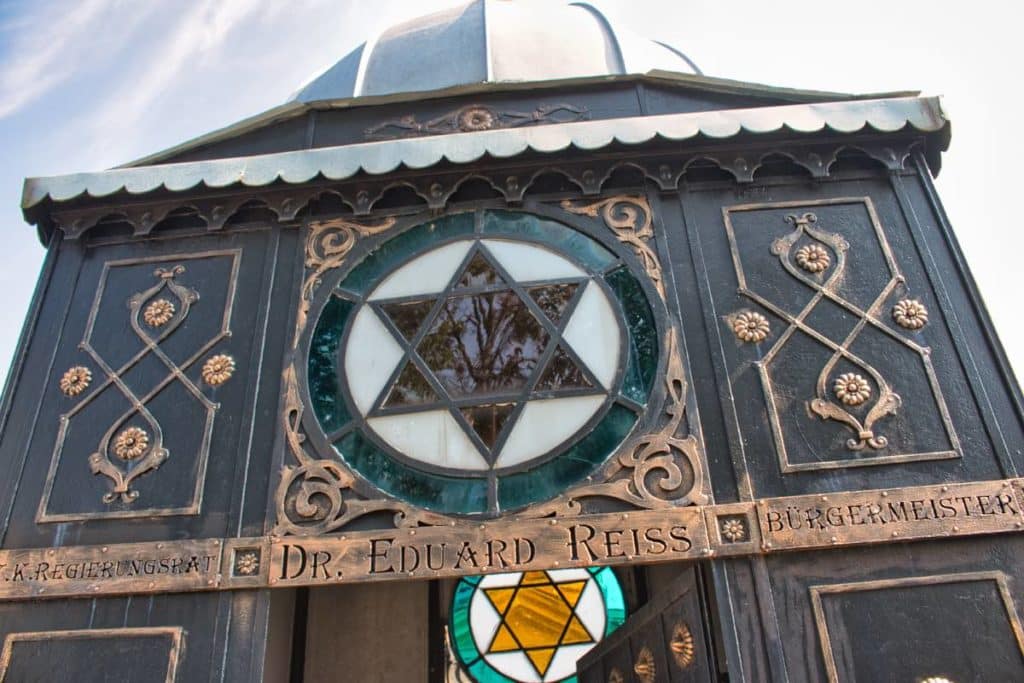
Find out about the Jewish past of “Little Jerusalem”
Besides the rich architecture from the time of Austrian rule, the traces of the Soviet occupation of Ukraine, the influences of the Romanians on Chernivtsi and the new face of independent Ukraine, the Jewish inhabitants have also left their mark on Chernivtsi. The “Dead Poets City”, as Chernivtsi is also sometimes called, still shows in some places the rich past as “Jerusalem on the Prut”. Find out more in the Museum of Culture and History of Jews in Bukovina in the Jewish House on Theater Square. The huge Jewish cemetery is also worth a visit. You can learn more about the Jews in Chernivtsi in our separate article.
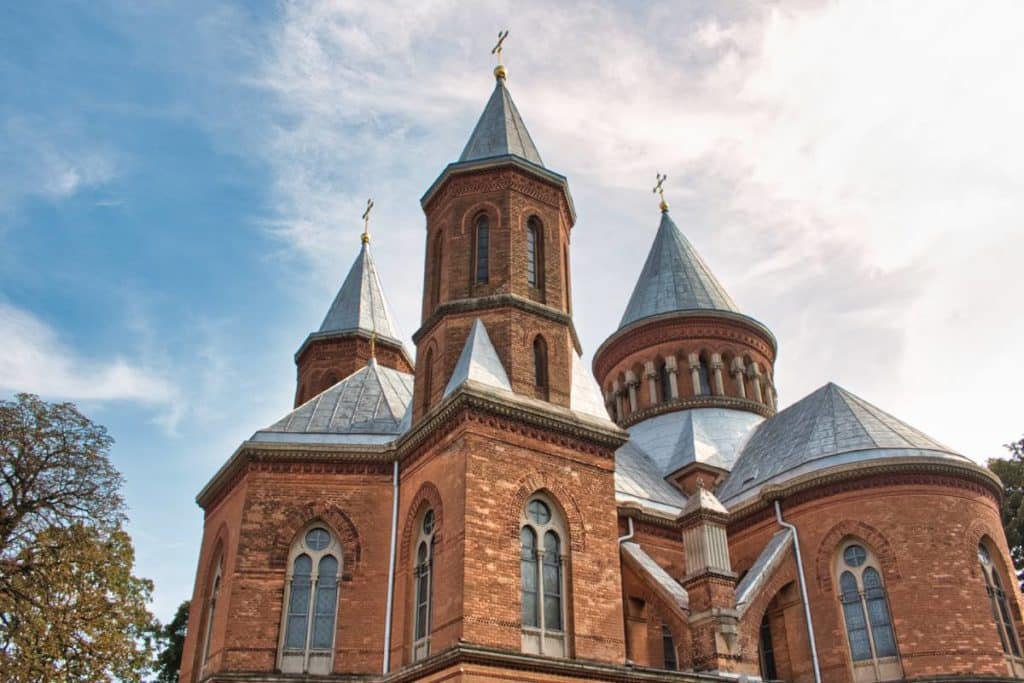
Discover the heritage of the Armenian diaspora
Armenians have lived in Bukovina since the 13th century. The Armenian diaspora persisted here for centuries. Unlike the Armenians of Suceava in present-day Romania, the Armenians of Chernivtsi were mostly Armenian Catholic. Finally, in 1875, the community could afford a new church and hired the Bohemian architect Josef Hlávka, who later built the building of the Bukovinian Metropolitan.
With the Soviet occupation, most Armenian Catholics left the Bukovina. The church was used by the communists for various purposes and was handed to the Chernivtsi Philharmonic in the late 1980s. Today, the Armenian church is used both as a place of worship and as an organ hall for the Philharmonic.
Feel oriental at the Turkish Square and Well
Already in Austrian times there was a Turkish Street in Chernivtsi. The name disappeared during the Soviet period. However, in the 1990s the title was reintroduced in the form of Turkish Square. Thus, there is also a well on the square, which is called the Turkish Well by the Chernivtsi people. During the Austrian period it was given a half-moon to make it look more exotic. During a renovation, a sculpture in the shape of a giant bicycle was also installed on the square. It is called “Forgotten by Gulliver”.
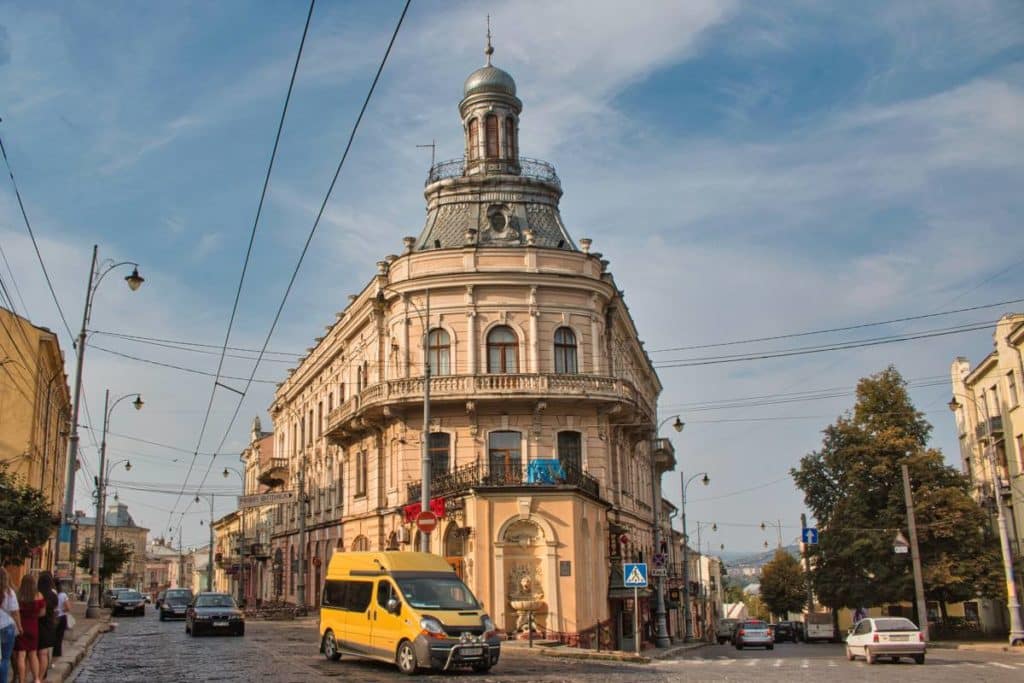
Take Titanic pictures at the Ship House
The unusual shape of the ship-house has given birth to many legends. The most famous says that two brothers had a great love for the sea. One became a sailor, the other became rich. When both wanted to retire in old age, unmarried, they found the ship house and settled here.
As beautiful and romantic as many of the legends are, however, the true history of the building is not to be despised. The Ship House was built on the site of a former inn called Zum Goldenen Schiff (To the Golden Ship). The architect was Julius Bochner, who was very active both in the city magistrate and in the Jewish community of Chernivtsi. The owner of the house was a Jewish merchant named Josef Schlefer. Schlefer later established a foundation that operated an orphanage. The orphanage was run from his inheritance. After his death, his daughter Friederike took care of the building until it was nationalized by the Soviet authorities.
Get fresh air at October Park / Park of Reformation
October Park is the largest park in Chernivtsi and is worth a visit. The lake with the recreation complex still looks as it did in the days of the Austrians. In 2017, the park had been renamed to Park of Reformation, as 2017 was the year of the Reformation. A short time later, however, the park was renamed back – despite the law of decommunization in Ukraine, which prohibits communist naming of public places.
Museums in Czernowitz
The museums of Chernivtsi reflect the richness not only of the culturally very diverse city, but also of the whole Bukovina region.
Regional Museum
The Regional Museum is a comprehensive collection of cultural and scientific pieces from all over Bukovina. A special gem is a Bible printed by Ivan Fedorov. He printed Bibles in Cyrillic script for the first time and is therefore often called the Gutenberg of the East.
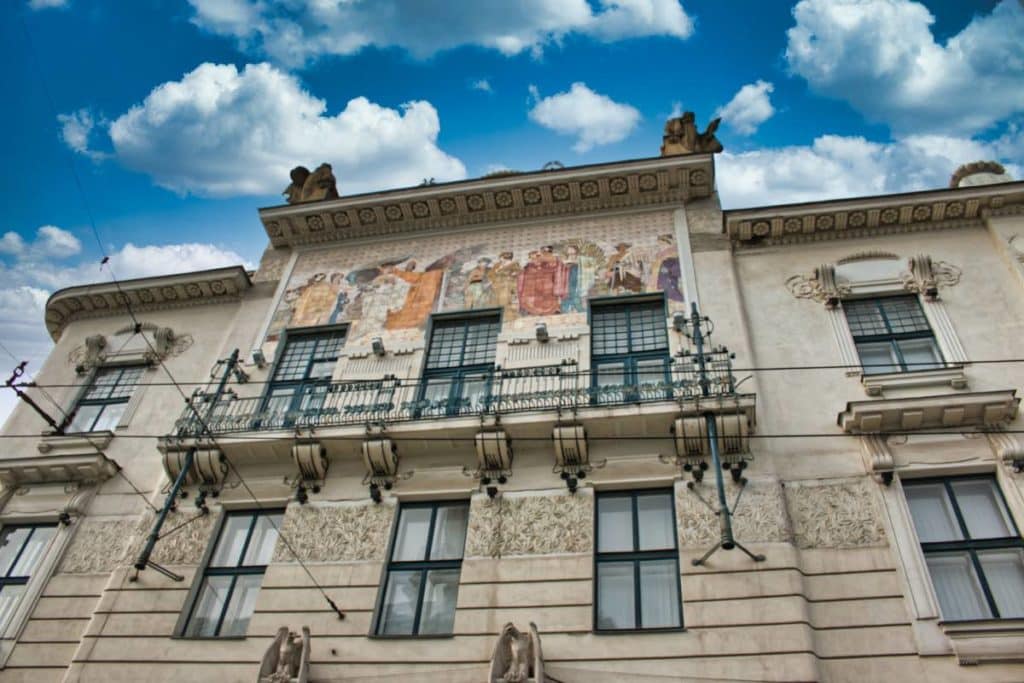
Art museum
The building itself is already a work of art, built in the style of the Viennese Secession. Originally it was built as the seat of the Savings Bank of Bukovina. Especially the majolica painting on the facade is a highlight among Chernivtsi sights. The museum displays art treasures from Bukovina from the 17th to the 21st century. These include folk art such as carpets and Easter eggs, as well as sculptures and paintings by regional artists.
Museum of Folk Architecture and Customs
If you want to see how Ukrainians in Bukovina used to live, the Museum of Folk Architecture and Customs is the place to be. Here is exhibited. Here 35 old buildings from different places have been reconstructed. Textiles, tools and utensils and also kitchen utensils are exhibited in the buildings. A nice trip into the past.
Chernivtsi Festivals
In Bukovina, people like to celebrate a lot. But the commemoration of the poets of the city and the region also plays an important role in the cultural life of Chernivtsi.
Meridian Czernowitz
Every year famous poets and writers come to Chernivtsi for the Meridian Festival from East and West, Ukraine and abroad. The Poetry Festival invites Chernivtsi to keep alive the memory of Paul Celan, Rose Ausländer and others.
Malanka
Every year on the anniversary of St. Melania, Malanka is celebrated in Bukovina and parts of the Carpathians. Also in Chernivtsi there is a huge parade for this purpose, where participants dress up in masks.
Obnova-Fest
The Festival of Renewal has been bringing all kinds of bands from the folk music scene to the Museum of Folk Architecture every year since 2008. Then, under the open sky and in front of thousands of spectators, bands mainly from Ukraine and neighboring countries perform.
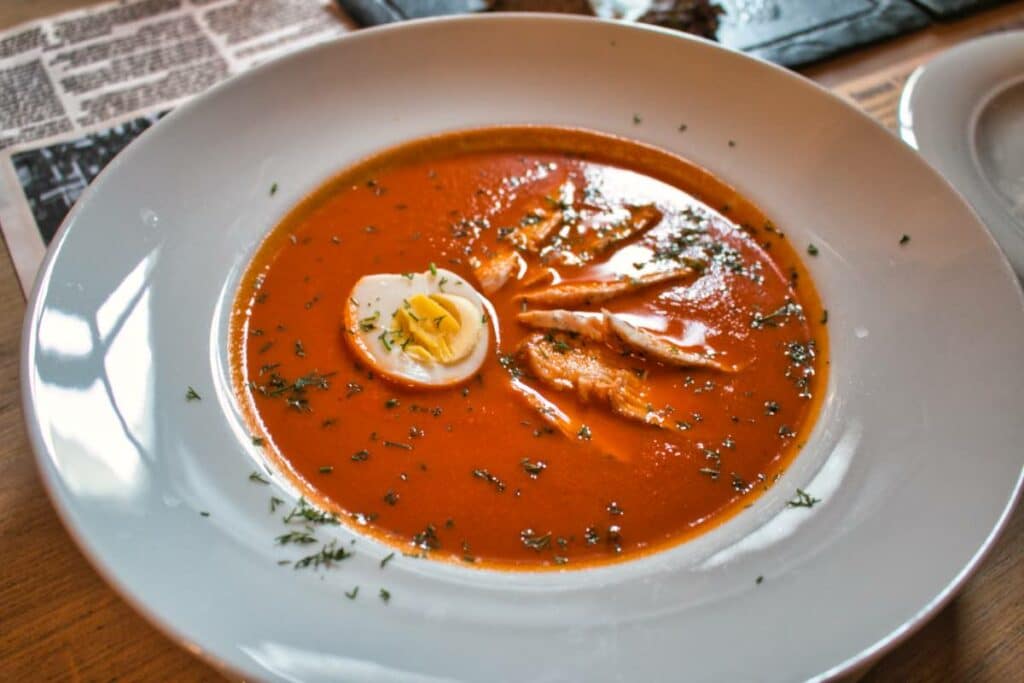
Eat in Chernivtsi – Discover the multicultural cuisine of the Bukovina
Bukovina as a region between several cultural areas and with the influence of other cultures has always been a culinary melting pot. In the meantime, they want to tie in with this again and offer Ukrainian food as well as other specialties.
Panska Huralnya
Panska Huralnya (Olha Kobyljanska Street 5) offers exactly this multicultural mix. Jewish food, Romanian and Ukrainian food – all in one restaurant. The Jewish dishes are not kosher, but at least they are based on the culinary traditions of Bukovina. If you want to get a quick overview of Bukovina cuisine, this is the place to go.
Kosher Organic
In the restaurant Kosher Organic (Sadovskoho Street 11), however, everything is strictly kosher and authentically Jewish prepared. This is also quite clear, because it loves right next to the current synagogue in Chernivtsi. The food is also very tasty.
Bucuresti
Chernivtsi was once also part of Moldova and Romania. Accordingly, the Romanian influences in Chernivtsi are not to be overlooked. In the Bucuresti restaurant (7 Olha Kobyljanska Street) you can enjoy good Romanian dishes such as polenta.
Chernivtsi book tips
Chernivtsi is a mythical city. Due to the many famous poets from here there are some interesting books.
- The memory of Jewish Chernivtsi almost completely disappeared with the Holocaust. The book “Ghosts of Home: The Afterlife of Czernowitz in Jewish Memory” is a try to restore some of this memory and bring it back to life.
No products found.
- Rose Ausländer was one of the most famous writers from Chernivtsi. As a Jew, she survived the Holocaust here and also met Paul Celan in the ghetto. Her poems still radiate an incomparable power today. Some of her poems she wrote in English.
No products found.
- Serhii Plokhy describes the history of Ukraine throughout the history. It’s a great book to understand more about this rather unknown country and comprehend the issues it faces today.
No products found.



